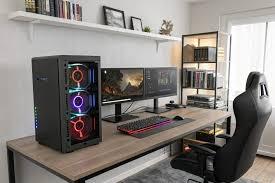When building or upgrading a PC, one of the most important considerations is whether your components work in balance. A Best Bottleneck Rechner helps you understand the performance limitations of your system by identifying which component—CPU, GPU, or even RAM—might be slowing down overall performance. By using this tool effectively, we can ensure smoother gaming, faster rendering, and more efficient multitasking.
In this detailed guide, we will explore what a Bottleneck Rechner is, how it works, why it matters, and how you can use it to make smarter hardware decisions for your PC setup.
What is a Bottleneck Rechner?
A Bottleneck Rechner is an online tool designed to analyze the compatibility and performance balance between your CPU and GPU. The term bottleneck refers to a point in your computer’s workflow where one component limits the speed or efficiency of the system.
For example:
-
If your CPU is too weak compared to your GPU, the graphics card cannot perform at its full potential.
-
If your GPU is outdated while your CPU is powerful, the processor will wait idly for the graphics card to keep up.
The Bottleneck Rechner calculates the percentage of performance loss caused by such imbalances, giving you a clear picture of where your system might struggle.
Why is Bottlenecking Important for PC Users?
Understanding bottlenecks is crucial for anyone who wants to:
-
Maximize gaming performance – Avoid frame drops, stuttering, and lag by ensuring components are balanced.
-
Save money – Prevent overspending on a high-end GPU that your CPU cannot support.
-
Future-proof your system – Make better upgrade decisions by knowing which part of your system is more likely to limit performance.
-
Boost productivity – Improve performance for video editing, 3D modeling, and other intensive tasks.
How Does a Bottleneck Rechner Work?
A Bottleneck Rechner takes into account your selected CPU, GPU, and sometimes RAM and storage, then compares their performance metrics. Most tools use benchmarks and real-world performance data to give you a bottleneck percentage.
For example:
-
A 10% bottleneck means one component is slightly holding back the other, but performance loss is minor.
-
A 30% bottleneck indicates a significant mismatch, requiring attention.
These calculations are based on benchmarking data, clock speeds, core counts, VRAM usage, and real-world gaming workloads.
Common Bottleneck Scenarios
1. CPU Bottleneck
Occurs when the processor cannot keep up with the GPU.
-
Example: Pairing an Intel i3 processor with an RTX 4070.
-
Symptoms: Lower FPS, especially in CPU-heavy games like Civilization VI or Assassin’s Creed Valhalla.
2. GPU Bottleneck
Occurs when the graphics card is weaker compared to the CPU.
-
Example: Using an Intel i9 with a GTX 1050 Ti.
-
Symptoms: Smooth CPU performance but limited graphics output, lower resolution capabilities.
3. RAM Bottleneck
When memory capacity or speed is insufficient.
-
Example: Running modern games with only 8GB of RAM.
-
Symptoms: Long loading times, stuttering, frequent crashes.
4. Storage Bottleneck
Using a slow HDD instead of an SSD.
-
Symptoms: Delayed boot times, slow file transfers, and sluggish application launches.
How to Use a Bottleneck Rechner Effectively
To get the best results from a Bottleneck Rechner, follow these steps:
-
Select your CPU and GPU from the database.
-
Choose the resolution (1080p, 1440p, or 4K) since bottlenecks vary with resolution.
-
Check the bottleneck percentage displayed by the tool.
-
Analyze the recommended upgrades to balance your system.
For example, a Ryzen 5 5600X paired with an RTX 3060 might show less than 5% bottleneck at 1080p, meaning the system is well balanced.
Tips to Reduce Bottlenecks
Even if your system shows a bottleneck, there are ways to minimize its impact:
-
Overclocking – Slightly boosting CPU or GPU speeds can balance performance.
-
Upgrading components – Replace the weakest part, usually GPU or CPU.
-
Optimizing settings – Lower in-game resolution or graphics details to ease GPU load.
-
Adding more RAM – Helps with multitasking and modern game requirements.
-
Switching to SSDs – Reduces storage-related bottlenecks dramatically.
Choosing the Right CPU-GPU Combination
When building a PC, it’s vital to select compatible components. Here are some balanced pairings:
-
Entry Level: Intel i3 + GTX 1650
-
Mid Range: Ryzen 5 5600X + RTX 3060 Ti
-
High End: Intel i7 13700K + RTX 4080
-
Ultra High End: Ryzen 9 7950X + RTX 4090
Using a Bottleneck Rechner before purchase ensures that you don’t waste money on mismatched hardware.
Advantages of Using a Bottleneck Rechner
-
Accurate compatibility check before upgrading or building a PC.
-
Budget efficiency by preventing overspending on unnecessary components.
-
User-friendly with quick results based on benchmark databases.
-
Resolution-specific analysis to match gaming preferences.
Limitations of Bottleneck Calculators
While a Bottleneck Rechner is highly useful, it’s important to note its limitations:
-
It cannot predict every real-world scenario, especially in games with unique optimization.
-
It does not factor in background processes or overclocking potential.
-
Results may vary based on RAM speed, cooling systems, and power supply.
Despite these limitations, it remains one of the best tools for guiding PC upgrade decisions.
Final Thoughts on Bottleneck Rechner
A Bottleneck Rechner is an essential tool for anyone building, upgrading, or optimizing a PC. By analyzing the balance between CPU, GPU, RAM, and storage, it helps us make informed decisions that enhance gaming performance, reduce wasted spending, and extend the life of our systems.
Whether you are a casual gamer or a professional creator, using a Bottleneck Rechner ensures that every part of your PC works together in harmony.



